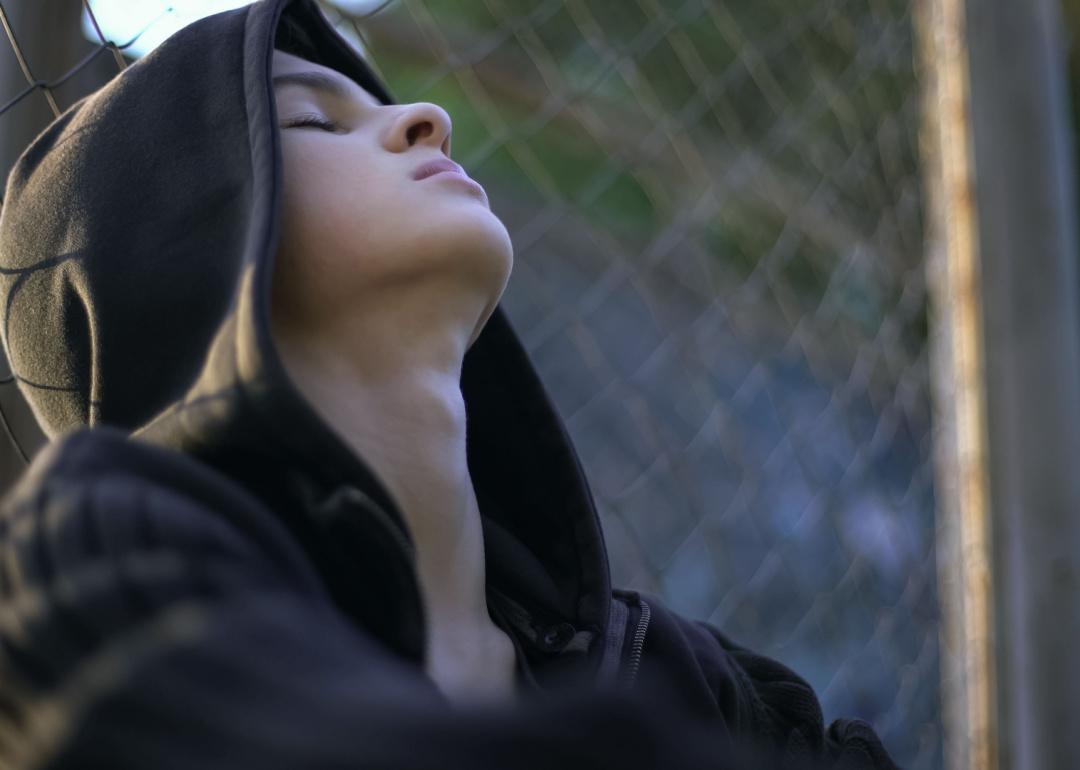
Traditional substance use disorder treatments can stigmatize teens—here are some alternatives
This story originally appeared on Sandstone Care and was produced and distributed in partnership with Stacker Studio.
Traditional substance use disorder treatments can stigmatize teens—here are some alternatives
Traditional approaches that may reduce substance use disorder for adults don't always have the same benefits for teenagers, whose minds and bodies are still developing. These treatments might also send teens with the disorder messages that negatively impact their self-esteem.
One major finding concerns a recent trend in teen high-risk drug use. After years of rising, the percentage of students in grades 9 through 12 who had tried cannabis, cocaine, or inhalants peaked in the late 1990s and has fallen since, according to the National Youth Risk Behavior Survey.
But overdose deaths among the young are up, largely due to the spread of fentanyl, an extremely potent opioid drug. After staying relatively flat from 2010 to 2020, overdose deaths among teens began spiking, nearly doubling.
Over 75% of adolescent deaths in 2021 involved the use of fentanyl, often found in counterfeit pills designed to look like prescription medications. That's a significant concern for the nearly 15% of students who report misusing prescription opioids.
Sandstone Care surveyed scientific literature to explore the best options for adolescents dealing with substance use disorder.
Traditional treatments for substance use disorder
There are several traditional treatments for substance use disorder, but they can be less effective for teens than for adults.
Until the 1980s, teens misusing drugs or alcohol ended up in the same treatment programs created for adults, for the most part. These tended to feature a hostile and adversarial approach, and experts now recognize them as developmentally inappropriate. Only after the 1980s did treatment programs designed specifically for teenagers begin to emerge.
Teenagers have key differences compared to adults regarding drug use that those designing an effective treatment program must consider. Adolescents have higher rates of binge consumption, lower rates of realizing they have a problem requiring treatment, and are more likely to present with additional psychiatric issues. Peer pressure is also a more significant factor.
Traditional treatment programs also use a disease-oriented approach, which runs the risk of telling the patient that they're fundamentally flawed rather than having a treatable condition.
Evidence-based treatments for teens
Three treatment programs, in particular, have shown the best outcomes for adolescents.
Family therapy
This treatment program centers on the idea that the family unit has the greatest long-term effect on child and adolescent development. Professionals address drug use by helping teens deal with the family problems accompanying it, like poor communication, weak cohesion, and poor problem-solving. The treatment involves the teen and at least one parent or guardian during the sessions.
Cognitive-behavioral therapy
The premise of CBT is that to address maladaptive behaviors, a person must first change the distorted, exaggerated, or otherwise mistaken or unrealistic thought that precedes it. This treatment focuses on identifying triggers of distorted thinking, reframing cognitive distortions, and developing effective communication and problem-solving strategies.
Motivational enhancement therapy
This therapy helps adolescents discuss their drug use and find ways to change their behavior. The discourse occurs weekly over several weeks. The therapist and patient identify goals, discuss strategies for meeting them, and brainstorm ways to cope with potential crises and roadblocks.
Additional therapeutic approaches have also shown benefits compared to control groups.
Group therapy
In this treatment, groups of patients meet with one or more therapists. The patients meet jointly and discuss their problems openly while under therapeutic supervision. CBT and motivational interviewing are among the most common approaches in this type of therapy.
Peer support programs
People who are not clinical professionals but have lived experience of or about substance use disorder can be part of a peer support approach. These people possess unique insights into behavior change and recovery and often have specialized training and certification. In addition, support groups and mutual-aid groups can form around shared identities, such as age and religious or cultural affiliation.
Residential treatment programs
This type of treatment involves 24-hour in-patient care at a nonhospital facility for recovery therapy and treatment. Various treatment methods are used, including talk-based approaches and group therapy. Medication may also come into play, including buprenorphine, a medicine that research has found effective at treating opioid use disorder. However, this treatment is only available at 1 in 4 residential addiction treatment facilities for adolescents.
Story editing by Jeff Inglis. Copy editing by Kristen Wegrzyn.



